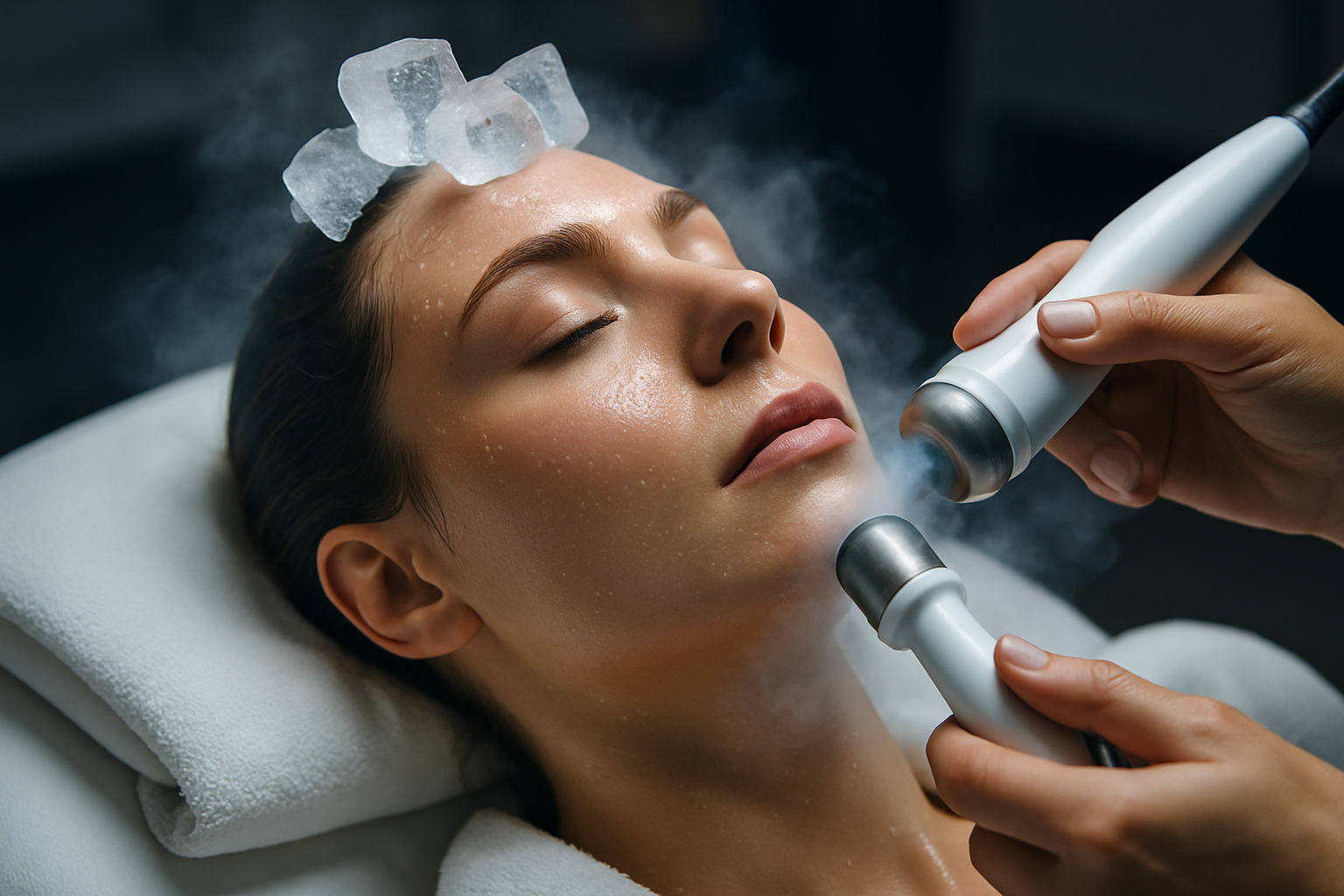Cryotherapy Facials: The Cold Truth About This Beauty Trend
In the ever-evolving world of beauty and wellness, a chilling new treatment has emerged, promising to freeze away signs of aging and rejuvenate skin with sub-zero temperatures. Cryotherapy facials, once the domain of elite athletes and celebrities, have now become increasingly accessible to the average beauty enthusiast. This innovative treatment harnesses the power of extreme cold to stimulate collagen production, reduce inflammation, and tighten pores. As the beauty industry continues to push boundaries, cryotherapy facials represent a fascinating intersection of science, technology, and skincare. But what exactly are these icy treatments, and do they live up to the hype? Let's dive into the frosty world of cryotherapy facials and uncover the cold, hard facts.

The cold temperatures also cause a numbing effect, which can temporarily reduce the appearance of fine lines and wrinkles by relaxing facial muscles. Additionally, the extreme cold is thought to constrict pores, potentially leading to a smoother, more refined skin texture. Some proponents of cryotherapy facials claim that the treatment can help reduce puffiness and inflammation, making it particularly appealing for those with acne-prone or sensitive skin.
The Evolution of Cold Therapy in Skincare
While cryotherapy facials may seem like a cutting-edge treatment, the use of cold in skincare and medicine has a long history. Ancient Egyptians used cold compresses to treat injuries and reduce inflammation as far back as 2500 BCE. In the 19th century, doctors began using localized cold therapy to numb areas before surgery and to treat certain skin conditions.
The modern incarnation of cryotherapy for skincare can be traced back to the 1970s when Japanese rheumatologist Dr. Toshima Yamauchi began using whole-body cryotherapy to treat rheumatoid arthritis. The treatment gained popularity in Europe in the 1980s and 1990s, primarily in sports medicine and pain management.
It wasn’t until the early 2000s that aestheticians and skincare professionals began to explore the potential of cryotherapy for facial rejuvenation. The first cryotherapy facial devices were introduced in high-end spas and dermatology clinics, offering a non-invasive alternative to more aggressive anti-aging treatments.
Types of Cryotherapy Facial Treatments
As the popularity of cryotherapy facials has grown, so too has the variety of treatments available. Here are some of the most common types:
-
Cryogenic Facials: These involve the use of a specialized machine that delivers a controlled stream of vaporized liquid nitrogen to the face. The treatment typically lasts 2-3 minutes and is often combined with other skincare treatments.
-
Cryo Sticks: These handheld devices are filled with a gel that can be frozen and then applied to the face in gentle, massaging motions. They offer a more affordable, at-home alternative to professional treatments.
-
Ice Globes: Similar to cryo sticks, these glass or metal orbs are filled with antifreeze liquid and can be stored in the freezer. They are rolled over the face to provide a cooling effect and promote lymphatic drainage.
-
Cryogenic Chambers: While not specifically for facials, some spas offer whole-body cryotherapy sessions that include exposure of the face to extremely cold temperatures.
Benefits and Risks of Cryotherapy Facials
Proponents of cryotherapy facials claim a wide range of benefits, including:
-
Reduced appearance of fine lines and wrinkles
-
Improved skin tone and texture
-
Decreased puffiness and inflammation
-
Enhanced product absorption
-
Boosted collagen production
-
Tightened pores
-
Increased circulation
However, it’s important to note that while many users report positive results, scientific research on the long-term efficacy of cryotherapy facials is still limited. Some studies have shown promising results in terms of collagen production and skin tightening, but more research is needed to fully understand the long-term effects.
As with any cosmetic treatment, there are potential risks to consider. These may include:
-
Skin irritation or redness
-
Temporary numbness or tingling
-
Risk of frostbite if not performed correctly
-
Potential exacerbation of certain skin conditions
It’s crucial to have cryotherapy facials performed by trained professionals and to consult with a dermatologist before trying the treatment, especially for those with sensitive skin or underlying health conditions.
The Future of Cryotherapy in Beauty and Wellness
As technology continues to advance, we can expect to see further innovations in the field of cryotherapy facials. Some emerging trends include:
-
Personalized Cryotherapy: Treatments tailored to individual skin types and concerns, using AI-driven analysis to determine optimal temperature and duration.
-
Combination Therapies: Integrating cryotherapy with other treatments like LED light therapy or microcurrent stimulation for enhanced results.
-
At-Home Devices: More sophisticated and effective home-use cryotherapy tools, making the treatment more accessible to a wider audience.
-
Cryogenic Skincare Products: The development of topical products designed to mimic or enhance the effects of cryotherapy facials.
As the beauty industry continues to explore the potential of cold therapy, cryotherapy facials represent an exciting frontier in non-invasive skincare treatments. While more research is needed to fully understand their long-term effects, the immediate benefits reported by many users suggest that this chilly trend may be here to stay. As with any beauty treatment, it’s essential to approach cryotherapy facials with a balanced perspective, weighing the potential benefits against the risks and consulting with skincare professionals to determine if it’s the right choice for your individual needs and goals.





